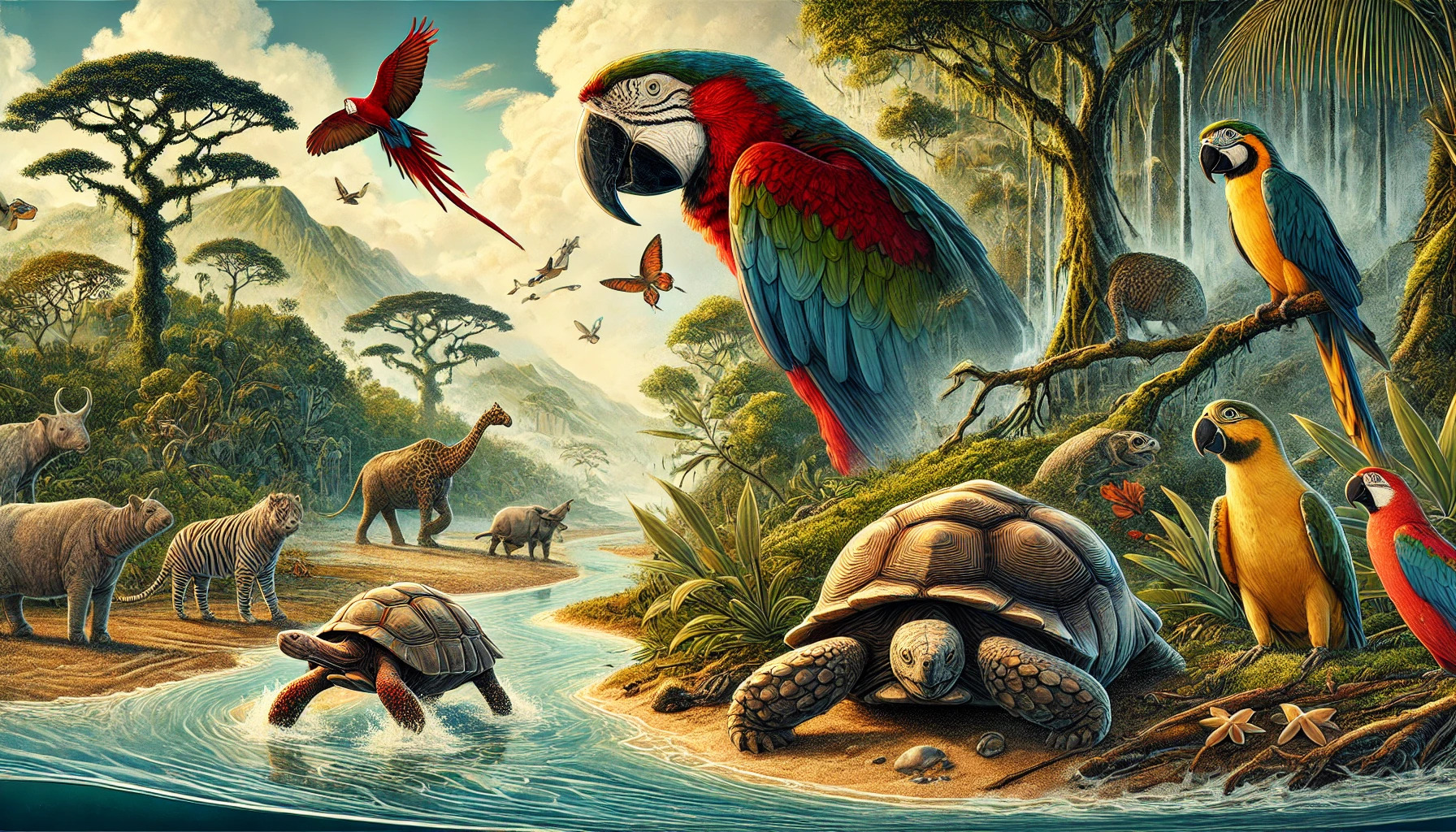In the past decade, many species have sadly vanished from the Earth. As habitats are destroyed and climate change accelerates, numerous animals have been lost along with their unique roles in the ecosystem.
Among the most notable species that have gone extinct are the Alaotra Grebe and the Pinta Tortoise. Each of these animals had its own story, representing the broader environmental challenges facing our planet. Understanding these extinctions can deepen awareness about conservation efforts and the ways people can help protect remaining wildlife.
With every extinct species, there is a reminder of how fragile ecosystems can be. Exploring the details of these losses not only informs about what has been lost but also encourages a conversation about protecting the biodiversity that remains.
Recent Extinctions: Mammals and Birds
In the last decade, several mammals and birds have sadly gone extinct. This section highlights significant losses, including the Pinta Island tortoise and the splendid poison frog, shedding light on their unique traits and the reasons for their decline.
Pinta Island Tortoise
The Pinta Island tortoise, known as Chelonoidis Abingdonensis, was once a prominent species from the Galápagos Islands. This tortoise was notable for its large size and long lifespan, with some individuals living over a century.
The last known individual, named Lonesome George, died in 2012. His death marked the official extinction of the species. Habitat loss due to invasive species and human activities greatly contributed to its decline. Conservation efforts came too late to save this unique tortoise.
Splendid Poison Frog
The splendid poison frog, or Oophaga speciosa, was a vibrant species found in Central America. It was known for its striking colors, which warned predators of its toxic nature.
Sadly, this frog was declared extinct in recent years, primarily due to habitat loss and climate change. Deforestation and pollution also severely impacted its environment. These factors pushed the splendid poison frog past the point of recovery, illustrating the fragility of amphibian populations.
Aquatic Losses: Fish and Amphibians
Aquatic ecosystems face significant challenges, leading to the extinction of several species. The Chinese paddlefish and various sharks and rays represent recent, tragic losses in these environments.
Chinese Paddlefish
The Chinese paddlefish, once abundant in the Yangtze River, was declared extinct in 2020. This unique fish was known for its long, flattened snout and could grow up to 23 feet. Overfishing and habitat loss severely affected its population. Efforts to track its numbers failed as no individuals have been spotted since the last confirmed sighting in 2003. Invasive species and dam construction further worsened the paddlefish’s chances, altering their natural habitat. This loss highlights the urgent need for better conservation practices in freshwater ecosystems.
Lost Sharks and Rays
In recent years, several species of sharks and rays have vanished from our oceans. Research indicates that at least 14 ocean animals have gone extinct over the last century, including some sharks and rays. Their decline can be attributed to overfishing and habitat destruction. Species like the lost hammerhead shark and the broadnose shovelnose ray have suffered from targeted fishing and bycatch. Many of these species play vital roles in their ecosystems, and their absence can disrupt food webs. Conservationists stress the importance of protecting remaining populations to prevent further losses in the future.
Insect Declines: The Overlooked Victims
Insects are essential to the ecosystem, yet many species are facing serious declines. Two notable examples highlight the urgent issue of insect extinctions: Franklin’s Bumblebee and various species of beetles.
Franklin’s Bumblebee
Franklin’s Bumblebee, once found in California and Oregon, has not been seen since 2006. With habitat loss and climate change as major threats, its disappearance is concerning. This bee plays a crucial role in pollinating various plants, which affects entire food chains.
Efforts to locate Franklin’s Bumblebee continue, but the lack of sightings raises red flags. Conservationists emphasize the need to protect remaining habitats. Without urgent action, this unique insect could be lost forever.
Gone Beetles
Several beetle species have vanished in recent years. One example is the Lord Howe Island Phasmid, rediscovered after being presumed extinct. Others, like certain longhorn and weevil beetles, have seen dramatic population declines.
Beetles are vital to soil health and nutrient cycling. Their decline disrupts local ecosystems and impacts agriculture. As species become extinct, the intricate web of life suffers.
Awareness and conservation efforts are crucial for these overlooked victims. Recognizing their importance can help motivate action to protect their habitats.

